Website www.vasarely.com Education Muhely Name Victor Vasarely | Role Artist Spouse Claire Spinner (m. 1930) | |
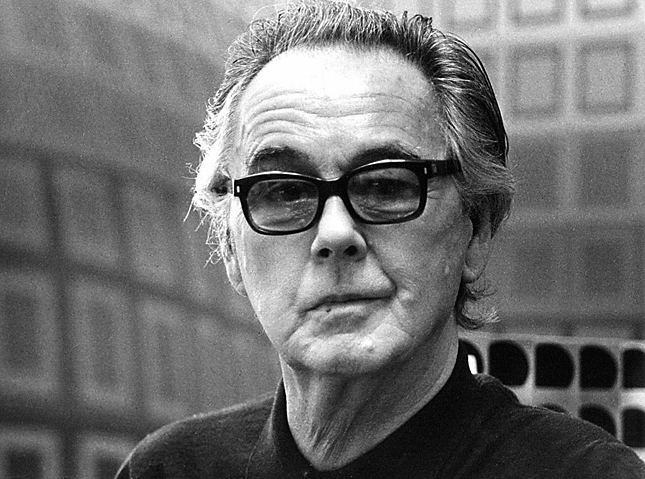 | ||
Full Name Vasarhelyi Gyozo Born 9 April 1906 ( 1906-04-09 ) Pecs, Austro-Hungarian Monarchy Artwork Hommage a l'Hexagone, Folklore planetaire Similar People Bridget Riley, Jean‑Pierre Yvaral, Matilde Perez, Jesus Rafael Soto, Alexander Calder | ||
Victor Vasarely. Im Labyrinth der Moderne - Ausstellungsfilm
Victor Vasarely ([viktɔʁ vazaʁəli]; [ˈviktor ˈvɒzɒrɛlːi]; born Vásárhelyi Győző [ˈvaːʃaːrhɛji ˈɟøːzøː]; ( 1906-04-09)9 April 1906 – ( 1997-03-15)15 March 1997), was a Hungarian–French artist, who is widely accepted as a "grandfather" and leader of the op art movement.
Contents
- Victor Vasarely Im Labyrinth der Moderne Ausstellungsfilm
- Video vault victor vasarely part 1
- Life and work
- Awards
- Museums
- References
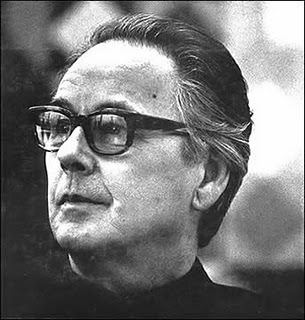
His work entitled Zebra, created in the 1930s, is considered by some to be one of the earliest examples of op art.
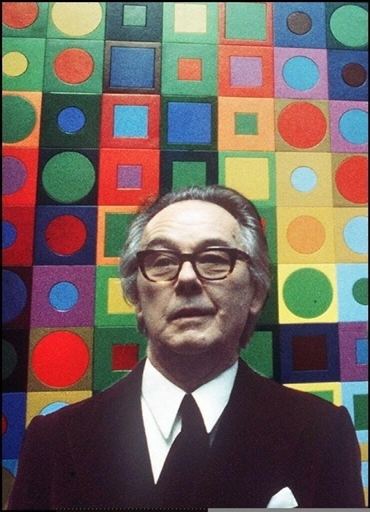
Video vault victor vasarely part 1
Life and work
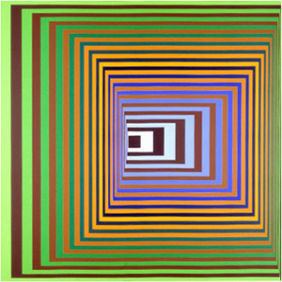
Vasarely was born in Pécs and grew up in Pöstyén (now Piešťany, Slovakia) and Budapest, where in 1925 he took up medical studies at Eötvös Loránd University. In 1927, he abandoned medicine to learn traditional academic painting at the private Podolini-Volkmann Academy. In 1928/1929, he enrolled at Sándor Bortnyik's private art school called Műhely (lit. "Workshop", in existence until 1938), then widely recognized as Budapest's centre of Bauhaus studies. Cash-strapped, the műhely could not offer all that the Bauhaus offered. Instead it concentrated on applied graphic art and typographical design.
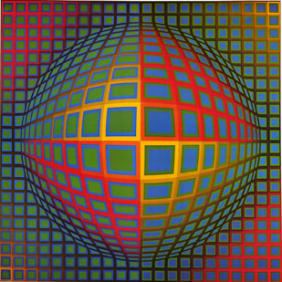
In 1929 he painted his Blue Study and Green Study. In 1930, he married his fellow student Claire Spinner (1908–1990). Together they had two sons, Andre and Jean-Pierre. In Budapest, he worked for a ball-bearings company in accounting and designing advertising posters. Vasarely became a graphic designer and a poster artist during the 1930s combining patterns and organic images with each other.
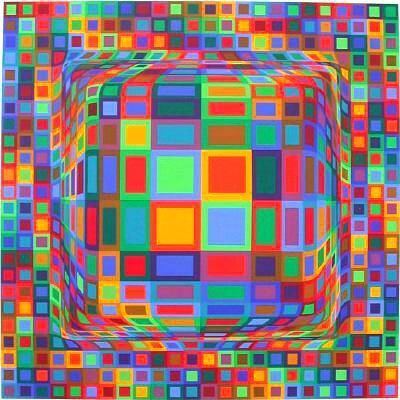
Vasarely left Hungary and settled in Paris in 1930. He worked as a graphic artist and as a creative consultant at the advertising agencies Havas, Draeger and Devambez (1930–1935). His interactions with other artists during this time were limited. He thought of opening an institution modeled after Sándor Bortnyik's műhely and developed some teaching material for it. Having lived mostly in cheap hotels, he settled in 1942/1944 in Saint-Céré in the Lot département. After the Second World War, he opened an atelier in Arcueil, a suburb about 10 kilometers from the centre of Paris (in the Val-de-Marne département of the Île-de-France). In 1961, he finally settled in Annet-sur-Marne (in the Seine-et-Marne département).
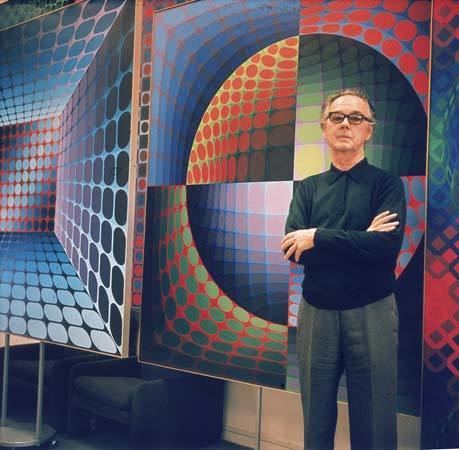
Vasarely eventually went on to produce art and sculpture using optical illusion. Over the next three decades, Vasarely developed his style of geometric abstract art, working in various materials but using a minimal number of forms and colours:
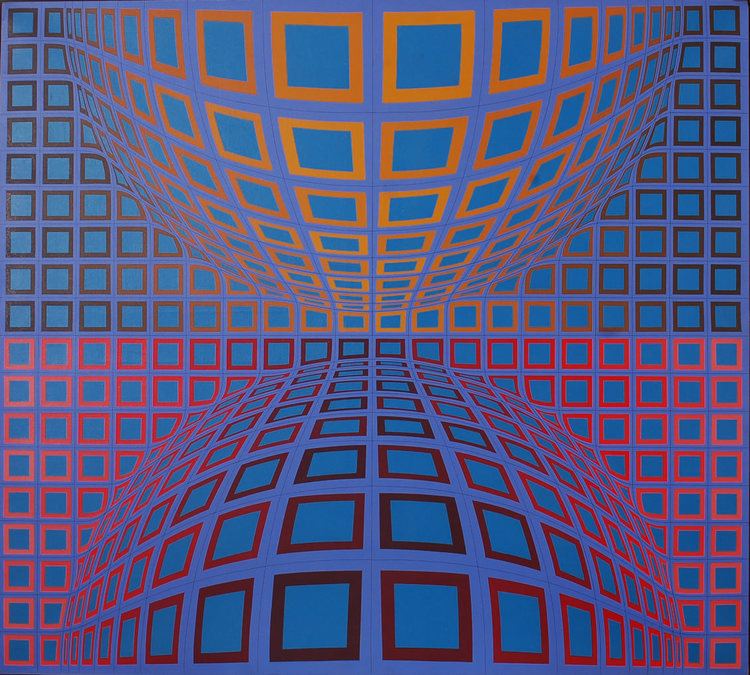
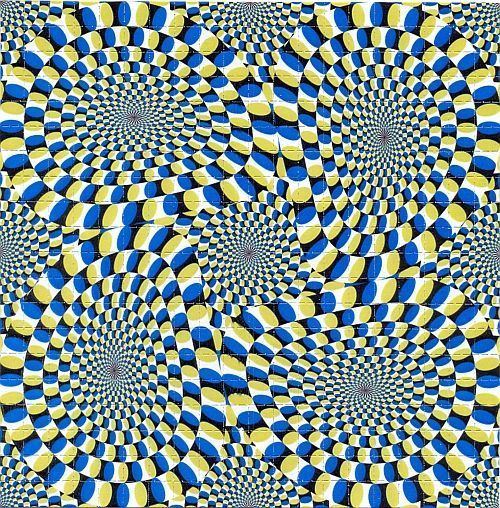
On 5 June 1970, Vasarely opened his first dedicated museum with over 500 works in a renaissance palace in Gordes (closed in 1996). A second major undertaking was the Foundation Vasarely in Aix-en-Provence, a museum housed in a distinct structure specially designed by Vasarely. It was inaugurated in 1976 by French president Georges Pompidou. Sadly the museum is now in a state of disrepair, several of the pieces on display have been damaged by water leaking from the ceiling. Also, in 1976 his large kinematic object Georges Pompidou was installed in the Centre Pompidou in Paris and the Vasarely Museum located at his birthplace in Pécs, Hungary, was established with a large donation of works by Vasarely. In the same decade, he took a stab at industrial design with a 500-piece run of the upscale Suomi tableware by Timo Sarpaneva that Vasarely decorated for the German Rosenthal porcelain maker's Studio Linie. In 1982 154 specially created serigraphs were taken into space by the cosmonaut Jean-Loup Chrétien on board the French-Soviet spacecraft Salyut 7 and later sold for the benefit of UNESCO. In 1987, the second Hungarian Vasarely museum was established in Zichy Palace in Budapest with more than 400 works.
He died age 90 in Paris on 15 March 1997.
A new Vasarely exhibit was mounted in Paris at Musee en Herbe in 2012.
